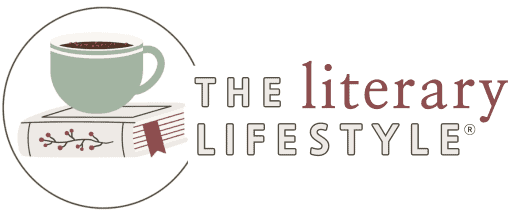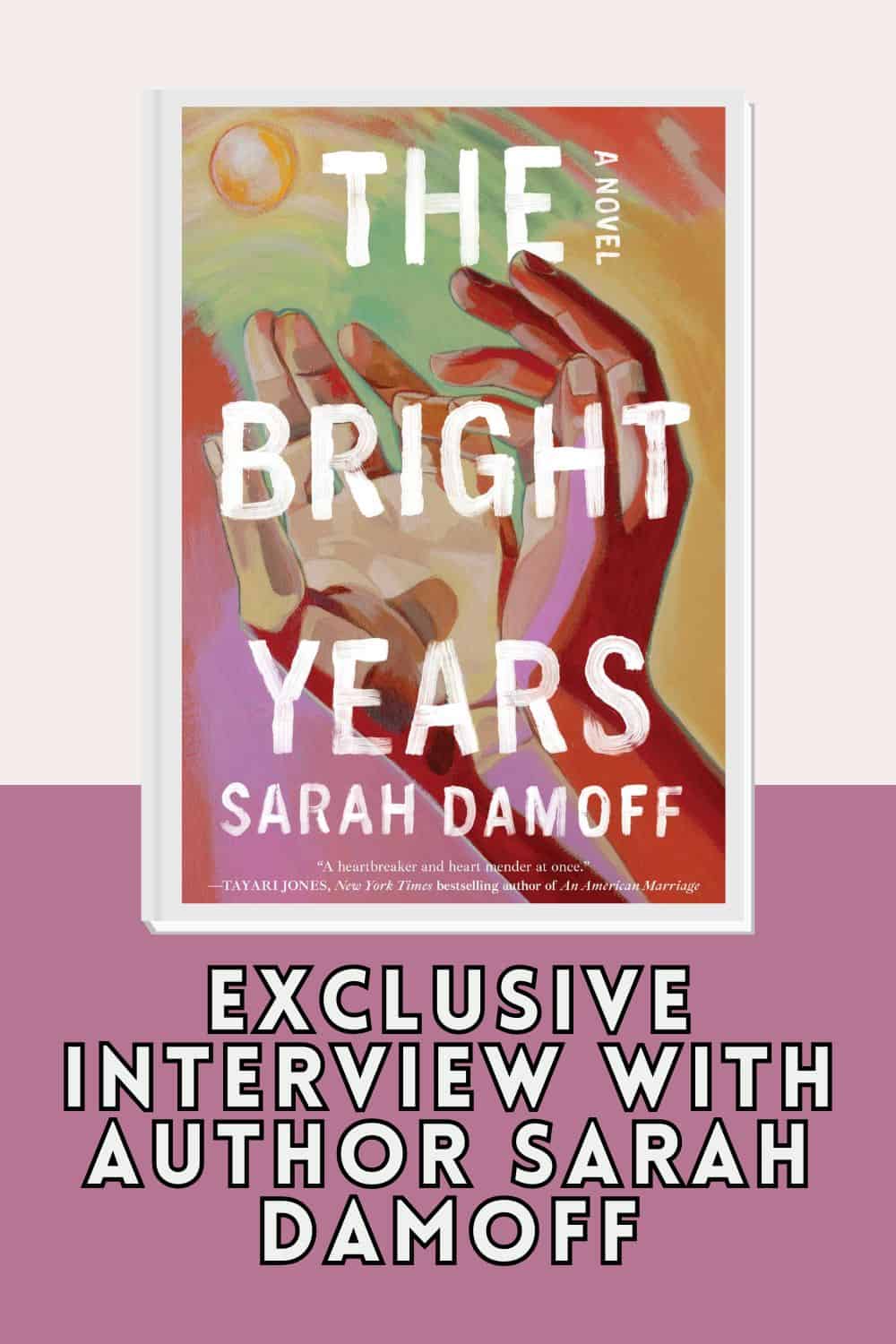I don’t read a lot of early-release debut novels, but The Bright Years by Sarah Damoff spoke to me as a family drama, which is my favorite genre, and it really delivered — an excellent debut!
I think many people will be talking about it, so I wanted to chat with the author upon its release in a book industry interview. She graciously agreed!

The Bright Years: Quick Summary and Review
This book is about the Bright family, dealing with generational trauma and its cycles from 1958-2019. (Trigger warnings: alcoholism, women’s fertility, death)
Lillian and Ryan marry and have a daughter, but she has a secret son, and he has a secret addiction. Spanning decades, the reader hears from the points of view of Lillian, their daughter Georgette (“Jet”), and Ryan as they cope.
Each perspective felt uniquely his or her own, and this manner of storytelling felt so poignant, coming full circle at the end and tugging at your heart.
It also reads so quickly that you can fly through it over a weekend with a large mug of your favorite warm beverage.
I recommend it to fans of Mary Beth Keane and Claire Lombardo.
Now, let’s hear from Sarah Damoff about it!
Sarah Damoff on Her Debut, The Bright Years
Let’s start with the title. Obviously, the family’s name is Bright, but without giving any spoilers away, the title seems to have more meaning beyond that. What does it mean to you?
It means that there are blazes of love, beauty, hope, laughter, and redemption even when there is (and there certainly is) great pain and darkness.
At its core, The Bright Years is about Ryan’s generational trauma and alcoholism and how it affects the family. However, threads of motherhood are also woven throughout. Why did you choose to add this layer?
Motherhood was the original core of the book. Ryan was meant to be a secondary character as Lillian raised Georgette, but he grew to be much more central. The roles of mother and daughter are important to me personally, and the initial premise was Lillian trying to figure out how to disclose her past to her daughter, and then how Georgette is impacted by her mother’s choices. When I started writing, Ryan was simply part of Lillian’s past. But that changed as he was given a chance to speak, which added much more fullness and focus to the story.
Themes of love and loss also flow in and out of the novel as the story progresses. Can love exist without loss?
I had an experience as a teenager where I witnessed someone lose a family member they’d grown quite distant from. This person kept other people at arm’s length as a measure of self-protection, and I recognized the same tendency in myself. They did not cry about the loss, and after witnessing such lack of grief over a death, I realized I didn’t want that. Love is worth the losing of it, and I would rather grieve it than not experience it. Apart from spiritual mysteries, no love exists without loss. This is much of what the Bright family explores, along with the question of how love can transcend loss through family.
The Bright family members (Lillian, Georgette, and Ryan) each have distinct voices and points of view in this novel. Why did you choose to have each of them speak?
From the start, I thought of this as a whole family’s story, rather than any one character, and in any family there are as many perspectives as there are people. There are secrets of varying sizes, and I believe that in literature, as in life, we need to listen directly to someone in order to best understand them.
I’ve seen many early reviewers say that The Bright Years is so well written it doesn’t feel like a debut novel — a huge compliment! (And I agree.) But, I know that quality writing is a craft. Can you tell us about your writing background and how you came to the moment of publishing your first novel?
Thank you! I have no formal background or training in writing, aside from my public school education and a few years writing children’s curriculum. Over the years, I would often write just for myself when inspiration struck, mostly mediocre poetry. I was a mother and social worker when I decided to try writing this family story. It was 2021, and I drafted the manuscript—originally a novel in letters—in a fun and feverish two months. I showed it to a few people, then forgot about it for a good while. The following summer, I was compelled to open it back up and pursue publication. I spent the next year researching how to publish a novel, all while revising my manuscript and pitch. During that time, I also wrote, submitted, and had a couple of short stories published, because I noticed it seemed unusual to pitch a novel with no previously published works. In 2023, I signed with my agent, and a few weeks later I was speaking with interested editors from several major publishing houses. A couple of days after that, we sold The Bright Years to Simon & Schuster in a pre-emptive deal.
Note from Jules: Now, four years later, you’re a published author! I admire your perseverance and agency.
About the Author Sarah Damoff’s Reading Life
What is/are your favorite book adaptation(s)?
Top of mind is the 2005 version of Pride & Prejudice.
Note from Jules: This is always top of mind for me too. And, it’s now on Netflix and celebrating its 20th anniversary this week!
What is your ideal reading spot?
On a sunny beach, or in the blue armchair beside my fireplace. Best after a day of physical activity, and always with a paper book.
What are your Desert Island books?
A Grief Observed by C.S. Lewis, The Poisonwood Bible by Barbara Kingsolver, I Am I Am I Am by Maggie O’Farrell, the Bible, and any poetry collection by Mary Oliver or Ada Limón. (Also, for practical purposes, some How To books about island survival!)
Note from Jules: I swear, this will be the year I read that Kingsolver favorite.
What’s your favorite bookstore?
Maybe the flagship Half Price Books near where I live. It’s massive, with rare collections, first editions, and unique finds. They have an incredible local bakery as well as author events, so I love the whole experience.
Note from Jules: This might actually be my dream bookstore– the kind of place you can get lost in and never know what you’ll stumble upon… with a cupcake!
What literary characters would you invite to a dinner party?
Marie-Laure from All the Light We Cannot See, Agnes from Hamnet, the Bishop from Les Misérables, and Diamond from At the Back of the North Wind.
Note from Jules: I spy a Maggie O’Farrell fan! Me too!!
Buy THE BRIGHT YEARS


